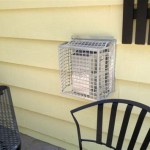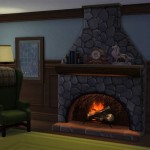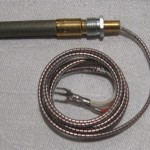Gas Fireplace Flue Insulation: A Comprehensive Guide
Gas fireplaces offer the warmth and ambiance of a traditional fireplace with increased convenience and efficiency. However, the proper functioning of a gas fireplace relies heavily on its flue system, which serves as the pathway for exhaust gases to safely vent outdoors. Gas fireplace flue insulation is crucial for optimizing performance, ensuring safety, and maximizing energy efficiency. This article will delve into the importance of flue insulation and provide comprehensive information on its benefits, types, installation, and maintenance.
Why Gas Fireplace Flue Insulation Matters
Gas fireplace flue insulation plays a crucial role in the overall efficiency and safety of your fireplace system. Here's why it's essential:
- Improved Efficiency: Flue insulation helps prevent heat loss by minimizing the transfer of heat from the hot exhaust gasses to the surrounding air. This leads to a more efficient combustion process, reducing energy consumption and saving on heating costs.
- Enhanced Safety: Properly insulated flues help maintain the flue temperature above the dew point. This prevents condensation from forming within the flue, which can lead to corrosion, blockages, and even potential fire hazards.
- Reduced Creosote Buildup: Creosote is a highly combustible substance that forms in the flue as a byproduct of incomplete combustion. Insulation helps regulate flue temperatures, reducing the likelihood of creosote buildup and minimizing the risk of chimney fires.
- Longer Equipment Life: By protecting the flue from corrosion and other damage, flue insulation contributes to a longer lifespan for your fireplace and its components.
Types of Flue Insulation
Several types of insulation are available for gas fireplace flues, each offering distinct advantages. Here's an overview of common insulation materials:
- Mineral Wool Insulation: Mineral wool insulation is a cost-effective option that provides excellent thermal resistance. It is typically available in loose or blanket form and is often used in combination with other insulation materials.
- Fiberglass Insulation: Fiberglass insulation is another widely used option known for its affordability and ease of installation. It comes in various forms, including batts, rolls, and loose fill.
- Ceramic Blanket Insulation: Ceramic blanket insulation is a high-temperature option suitable for demanding applications. It offers exceptional heat resistance and is particularly useful in situations where flue temperatures are high.
- Reflective Foil Insulation: Reflective foil insulation is primarily used to minimize heat loss through radiation. It typically consists of a thin layer of foil backed by a foam or other insulating material.
Gas Fireplace Flue Insulation Installation
The installation process for flue insulation depends on the type and size of the flue, as well as the chosen insulation material. It's crucial to consult with a qualified professional for proper installation. Here's a general overview of the process:
- Inspect the Flue: Before installing insulation, a thorough inspection of the flue is essential to identify any potential problems, such as cracks or blockages.
- Prepare the Insulation: The chosen insulation material should be prepared according to the manufacturer's instructions. This may involve cutting, fitting, or assembling components.
- Install the Insulation: The insulation is carefully inserted into the flue, ensuring a tight fit and proper coverage. The installation process may involve using specialized tools and techniques.
- Inspection and Testing: After installation, the flue system should be inspected to ensure proper insulation placement and functionality. Testing may be required to verify that the flue is operating efficiently and safely.
It's important to note that the installation process for flue insulation can be complex and requires specialized knowledge and expertise. Attempting to install flue insulation yourself without the proper training and tools can be dangerous and may compromise the safety and efficiency of your fireplace system. Seek professional assistance for proper installation and ensure the safety and longevity of your fireplace.
Insulating Around Fireplace Flue Diy Home Improvement Forum

Chimney Liners Usa Fireplace Insert Venting Information
Insulating Around Direct Vent Fireplace Hearth Com Forums Home

Insulation Touching Fireplace Flue Attics The Inspector S Journal
Gas Fireplace Venting Explained Heat Glo

Insulation Touching Chimney Meta Flex Flue Pipe Internachi Forum

Choosing Using Flues Chimneys For Domestic Gas Burning Appliances

Icc Direct Vent Gas Venting Insulated Wall Thimble

Walls Behind Fireplaces Building America Solution Center

Insulation Near A Fireplace Misterfix It Com
Related Posts








